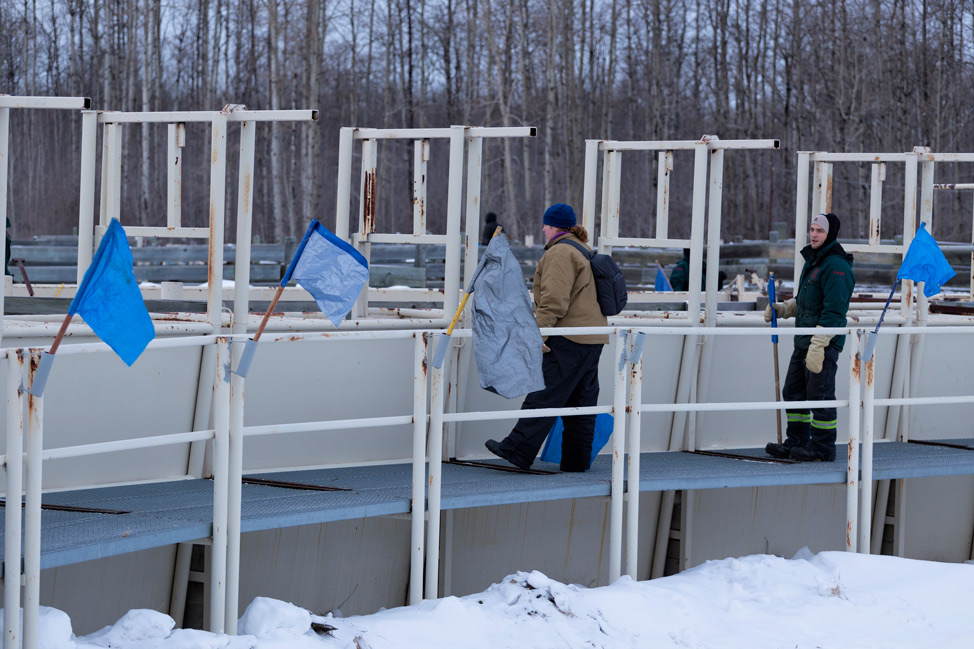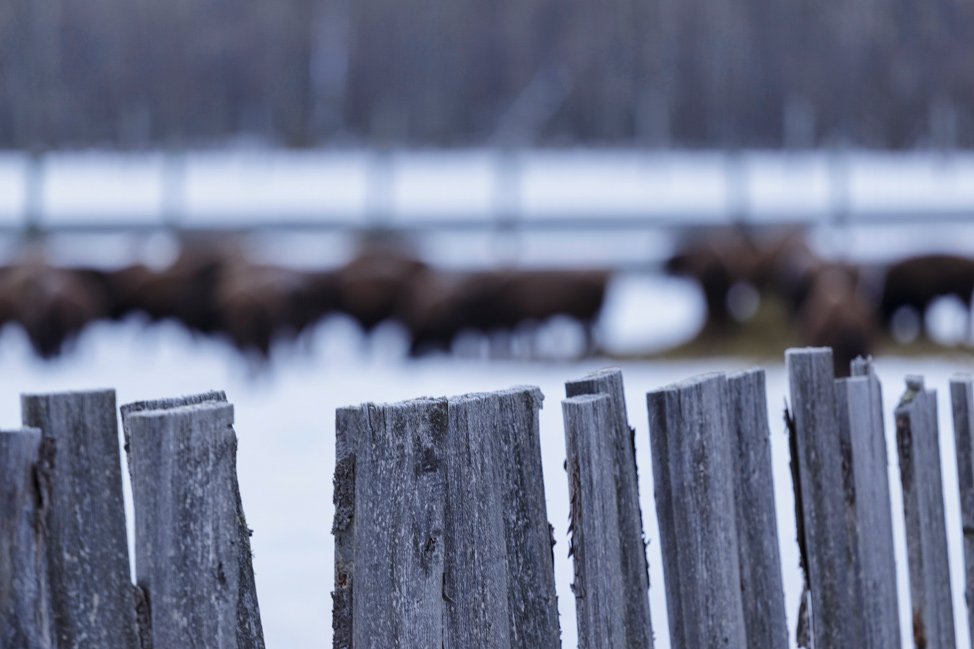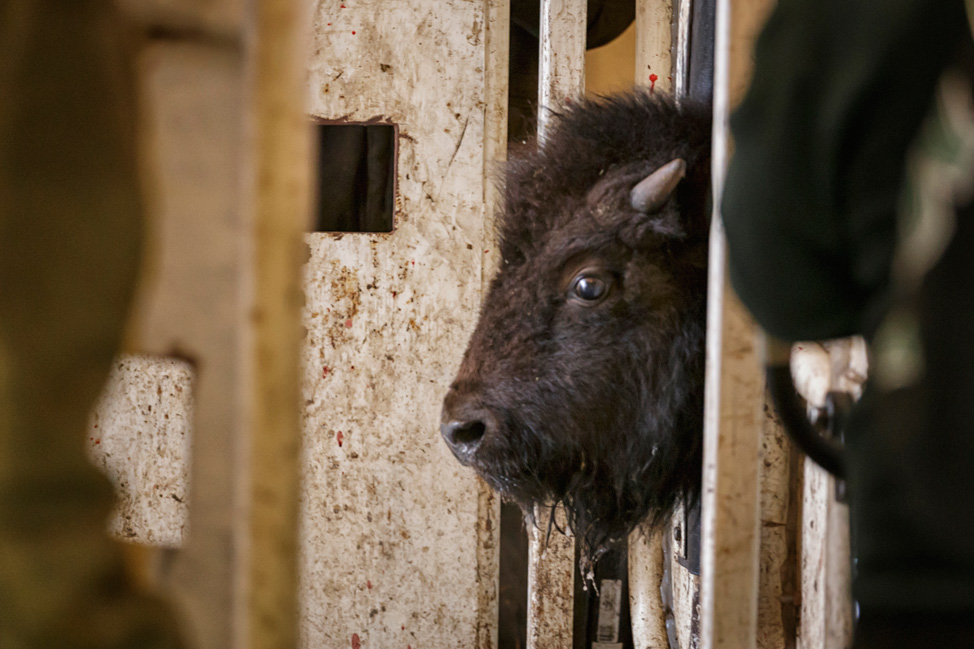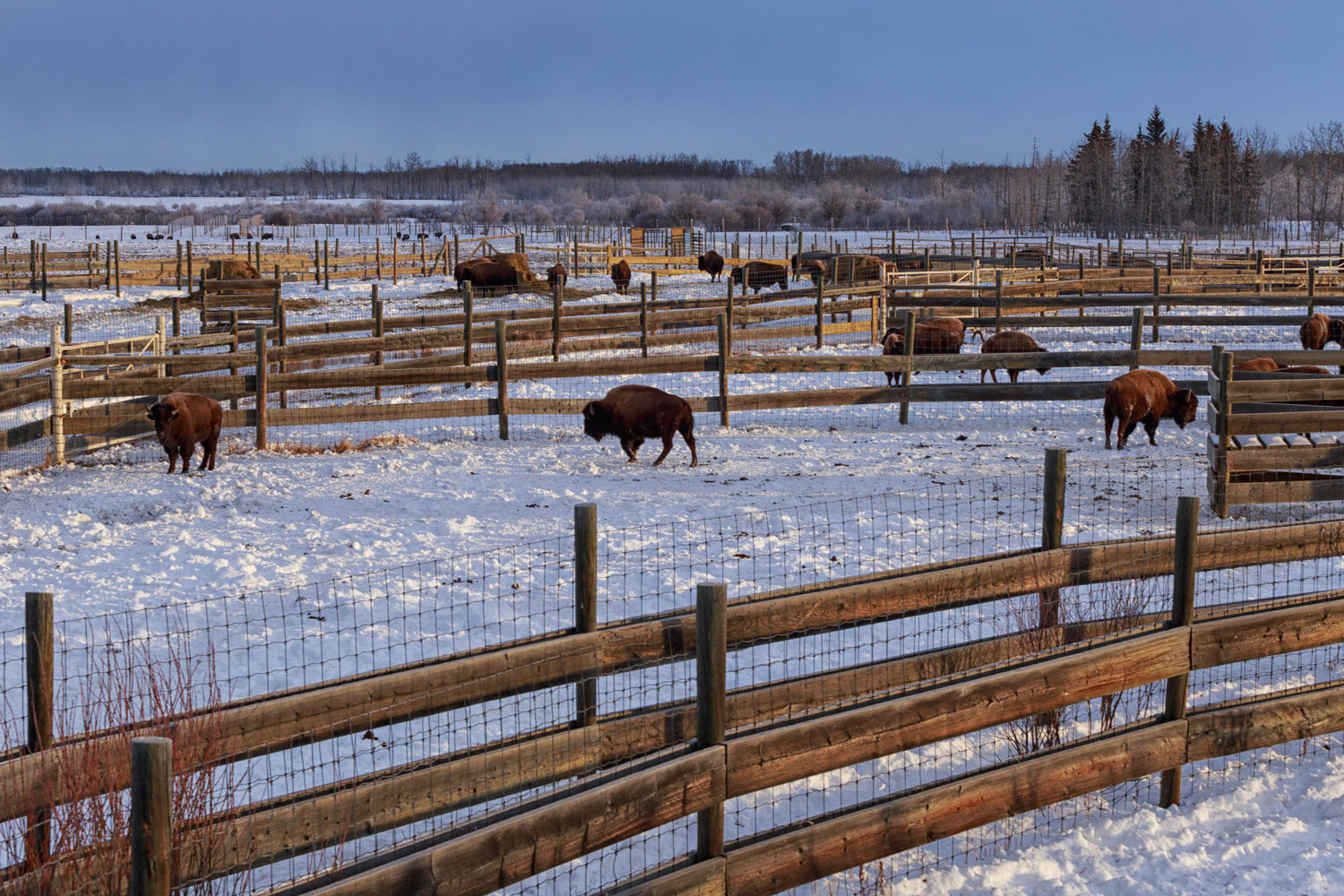They moved quickly and quietly for creatures of such substantial girth. Their coarse hair often hung over their eyes and was laced with straw and other debris. Yet they seemed approachable, soft and fuzzy enough that I wanted to rush and embrace them. But I obeyed and kept my distance. These are, despite the fence that binds them in Elk Island National Park, entirely wild creatures.

In the still moments, we only heard hooves crunching snow, but near the aptly named octagon, that near silence was disturbed by the clanking of metal as doors opened and closed. Several of the youngest bison were being moved through a giant maze to reach the station that would see them tested for disease ahead of a big trip south. These particular Great Plains Bison were set to return to where the entire species almost died off, in Montana, for a large conservation project.”Gone are the cowboy days of corralling by force,” Stephen Flemming, the Superintendent of the Park informed us. “Now we move them with their bellies; we woo them through the octagon with food.”
From one section to another they moved, until they were finally trapped in a slim enclosure, waiting for their turn. Some panicked, one even got flipped over, and staff raced to right the young calf. Others had blue flags lowered into their line of vision, the sight of that colour proven to calm the bison. They were soon shepherded through and back to roam again. And without understanding, of course, of the importance of their journey.


“There is a long stretch of international history, all related to the bison,” Stephen said.
It was in the early 1900s when their kind was almost entirely wiped out. A Montana native, Walking Coyote, started a herd after shooting a bison female while hunting, and the calves followed him back. He later joined forces with another, and together they grew their herd of a few dozen to over 500.
It was during a time when the US government was trying to push out the native reservations and gave little regard to the fact that this herd even existed. The Dominion Parks of Canada stepped in and promised safety for the bison. They’ve since been moved a couple of times, but now live free in Elk Island National Park, just east of Edmonton. The fence around them only exists to conserve; there is no other interaction with them except what is necessary. They are even handled only in winter, as the summer heat is too stressful for them.
These Great Plans Bison now number above 800, and are the only purebred conservation stock that exist in the world. (Seen bison in your travels? They would have had some cow genes in them.) Those headed south to Montana are to help build another herd as a project of the American Prairie Reserve. And stock has even headed from Elk Island to as far as Russia. Sent via jet, thirty at a time made the big trip (ninety in total).”Russia?” I asked, confused why this stock would be introduced to an area to which they are not native.
“Part of the reason we agreed to it is for calamity planning,” Stephen explained. “If something ever happens to wipe out the herds in the western hemisphere, the species will still exist somewhere else on the planet.” I was stunned by that response, not ever before thinking of the planning that must happen on that type of scale. But I’m glad that someone else does.

It always astounds me, the disregard that exists in many parts of the world for animals, and even moreso when it happened on my own continent in the past century. This visit was encouraging.
elk island national park
The Park, just 35km east of Edmonton, is home to many other animals such as elk (of course!), wood bison, moose, deer, beaver, and many types of birds. Tours are offered, and Stephen aspires to open it up even more with an interpretation center. For now, there are plenty of spots to cross-country ski and it’s a perfect place to observe northern lights when they are happening. In summer there is camping and lots of trails for hiking.

Leave a Reply